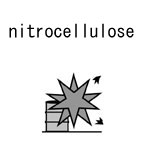| Case Name |
Explosion during the final process of nitration for nitrocellulose manufacturing |
| Pictograph |

|
| Date |
April 26, 1968 |
| Place |
Taketoyo, Aichi, Japan |
| Location |
Chemical factory |
| Overview |
In manufacturing of nitrocellulose, deacidification work finished after nitration, and nitrocellulose was taken out from the nitration reactor. Three workers got burnt as nitrocellulose decomposed suddenly, ignited, and spouted out, when the lid of the nitration reactor was opened. The following seemed to be the causes: the un-nitrated material remained in the nitrocellulose and the deacidification was insufficient. Besides, the protectors of the workers were insufficient. |
| Incident |
Nitrocellulose deflagrated when the lid of the reactor was opened in order to take out the nitrocellulose after nitration finished, and 3 workers got burnt. |
| Processing |
Manufacture |
| Individual Process |
Rundown and takingout |
| Process Flow |
Fig2.Unit process flow
|
| Chemical Reaction |
Nitration |
| Chemical Equation |
Fig3.Chemical reaction formula
|
| Substance |
Nitrocellulose |
| Type of Accident |
Explosion |
| Sequence |
7 workers started nitration work in the morning on the accident day, April 26th, 1968.
Nitration of nitrocellulose finished, the next batch of nitration work started at 2:00 p.m.
The valve for discharging acid of the nitration reactor was opened, because the nitration ended at 02:50.
The bucket in the nitration reactor was rotated at high speed for about five minutes for the deacidification of the generated nitrocellulose from about 3:00.
Afterwards, the lid of the nitration reactor was lifted to 30-40 cm high by pulling the wire from the corridor in order to take out the nitrocellulose in the nitration reactor.
Suddenly, the nitrocellulose decomposed, and it ignited, and flame and acid gas spouted out.
By being obstructed by the lid of the nitration reactor, the flame spread through the corridor where the operators were working.
One worker who had taken out nitrocellulose wore heat-resistant clothes, and was defending his face with the face shield. However, as he tried to escape, he turned around and his back was burned by fire because his back had not been covered with heat-resistant clothes.
Moreover, the flame went into the face shield from the rear side because the rear side was open.
Therefore, his face also got burnt.
Two workers who were standing by on the corridor for the preparation work for the following nitration also got burnt in their feet and faces. |
| Cause |
The following seemed to be the causes of the spontaneous ignition: un-nitrated materials were contained in the nitrocellulose and the deacidification of the nitrocellulose was insufficient. Providing against fire accidents, the operators put on protectors, but they were insufficient. They only protected the front side from the flame and the back side was not protected, which is useless on the site. These factors increased the damage. |
| Countermeasures |
1. The operating manual was improved.
2. It is desirable that taking-out work of nitrocellulose is carried out with remote control operation. Whole-body protectors should be worn, if remote operation is not possible, and the escaping devices should be equipped completely. |
| Knowledge Comment |
1. The work should be done after the potential factors of danger are removed.
2. It is necessary to take protective measures with predicting the situation in case of fire to avoid an injury accident. |
| Background |
It is well known that nitrate, such as nitrocellulose, is very dangerous when acid remains. Therefore, sufficient deacidification must be done after the nitration ended. In nitration work in this accident, it is supposed that sufficient deacidification might not be conducted because tense atmosphere was lost at the site. Although the protectors were put on against a fire accident, they were not useful for actual use. |
| Reason for Adding to DB |
Example of insufficient hazard estimation and mannerism of work |
| Scenario |
| Primary Scenario
|
Organizational Problems, Poor Management, Slackness of Management, Carelessness, Insufficient Precaution, Mannerism, Poor Value Perception, Poor Safety Awareness, Inadequate Protector, Nitration, Regular Movement, Careless Movement, Insufficient Acid Removal, Planning and Design, Poor Planning, No Remote Control of Dangerous Work, Bad Event, Chemical Phenomenon, Abnormal Reaction, Secondary Damage, External Damage, Explosion, Bodily Harm, Injury, 3person burnt
|
|
| Sources |
Masamitsu Tamura, Wakakura Masahide, Explosion of the nitrocellulose. Reaction danger -Accident case and analysis- p.85(1995).
Ministry of Labor, Labour Standards Bureau, Explosion of the acetic acid distillation can. Case and countermeasure of accident in a factory. pp.92-93(1969).
|
| Number of Injuries |
3 |
| Field |
Chemicals and Plants
|
| Author |
OGAWA, Terushige (Graduate School of Environment and Information Sciences, Yokohama National University)
TAMURA, Masamitsu (Center for Risk Management and Safety Sciences, Yokohama National University)
|
|